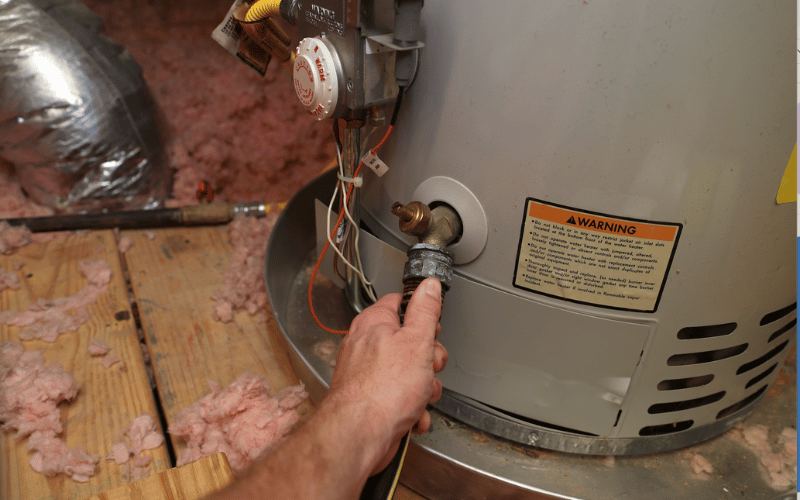Key Care Techniques for Your Home's Hot Water System
Key Care Techniques for Your Home's Hot Water System
Blog Article
The publisher is making a few good pointers on the subject of Water Heater Maintenance Tips You Can't Afford to Forget in general in the article underneath.

Hot water is essential for everyday comfort, whether it's for a revitalizing shower or washing recipes. To ensure your warm water system runs effectively and lasts much longer, routine upkeep is essential. This post gives useful ideas and understandings on how to keep your home's hot water system to stay clear of disruptions and costly fixings.
Intro
Maintaining your home's warm water system might appear daunting, but with a few basic actions, you can ensure it runs smoothly for years to find. This overview covers everything from understanding your hot water system to do it yourself upkeep tips and understanding when to call in professional assistance.
Value of Keeping Your Hot Water System
Routine upkeep not just extends the life expectancy of your hot water system however likewise guarantees it runs efficiently. Overlooking maintenance can cause lowered efficiency, higher power costs, and also premature failure of the system.
Signs Your Hot Water System Requirements Upkeep
Knowing when your hot water system needs attention can stop significant concerns. Keep an eye out for signs such as inconsistent water temperature, odd sounds from the heating system, or corroded water.
Understanding Your Hot Water System
Before diving into maintenance jobs, it's handy to recognize the fundamental elements of your hot water system. Generally, this includes the hot water heater itself, pipelines, anode poles, and temperature controls.
Monthly Maintenance Tasks
Normal regular monthly checks can assist catch small concerns prior to they escalate.
Flushing the Hot Water Heater
Purging your water heater removes debris accumulation, enhancing efficiency and lengthening its life.
Monitoring and Replacing Anode Rods
Anode poles protect against rust inside the tank. Inspecting and replacing them when broken is vital.
Examining and Adjusting Temperature Level Settings
Adjusting the temperature level setups makes certain ideal performance and security.
DIY Tips for Upkeep
You can execute numerous upkeep tasks yourself to maintain your warm water system in top condition.
Checking for Leakages
On a regular basis examine pipelines and connections for leaks, as these can cause water damages and higher costs.
Checking Pressure Alleviation Valves
Testing the stress relief valve guarantees it functions properly and prevents too much pressure build-up.
Insulating Pipelines
Insulating warm water pipes minimizes warmth loss and can save power.
When to Call a Professional
While DIY upkeep is valuable, some issues need specialist competence.
Facility Issues Needing Specialist Assistance
Instances include major leakages, electrical issues, or if your hot water heater is regularly underperforming.
Routine Specialist Maintenance Advantages
Expert upkeep can include extensive evaluations, tune-ups, and guaranteeing conformity with security requirements.
Final thought
Normal maintenance of your home's hot water system is important for efficiency, longevity, and cost savings. By following these tips and knowing when to seek expert assistance, you can make certain a dependable supply of warm water without unexpected disturbances.
How to Maintain an Instant Hot Water Heater
Before tinkering with your hot water heater, make sure that it’s not powered on. You also have to turn off the main circuit breaker and shut off the main gas line to prevent accidents. Also turn off the water valves connected to your unit to prevent water from flowing into and out of the appliance. 2. When you’re done, you have to detach the purge valves’ caps. These look like the letter “T†and are situated on either side of the water valves. Doing so will release any pressure that has accumulated inside the valves while at the same time avoid hot water from shooting out and burning your skin. 3. When the purge valves’ caps are removed, you have to connect your hosing lines to the valves. Your unit should have come with three hoses but if it didn’t, you can purchase these things from any hardware or home repair shops. You can also get them from retail stores that sell water heating systems. Read the user’s manual and follow it to complete this task properly. When the hosing lines are connected, open the purge port’s valves. 4. You should never use harsh chemical cleaners or solutions when cleaning your unit. Make use of white vinegar instead. It should be undiluted and you’ll probably use about 2 gallons. 5. Now flush your water heater. This task should probably take about 40 minutes. We can’t give you specific directions for this because the procedure is carried out depending on the type, model and brand of your heater. With that being said, refer to the user’s manual. 6. When you’re done draining the unit, you have to turn off the purge port valves again. Remove the hosing lines that you earlier installed on each of the water valves. Put the valve caps (purge port) back in their respective places and be very careful so as not to damage the rubber discs that are found inside these caps. 7. Now that everything’s back in place, check your user’s manual again to find out how to reactivate your water heating system. 8. Once it is working, turn one of your hot water faucets on just to let air pass through the heater’s water supply pipes. Leave the tap on until water flows smoothly out of it. https://www.orrplumbing.com/blog/2014/september/how-to-maintain-an-instant-hot-water-heater/

Hopefully you enjoyed our piece on How to Maintain a Hot Water Heater in a Few Simple Steps. Thank you for finding the time to read through our blog. Don't hesitate to take the opportunity to promote this post if you enjoyed it. I praise you for being here. Please come visit our blog back soon.
Visit My Site Report this page